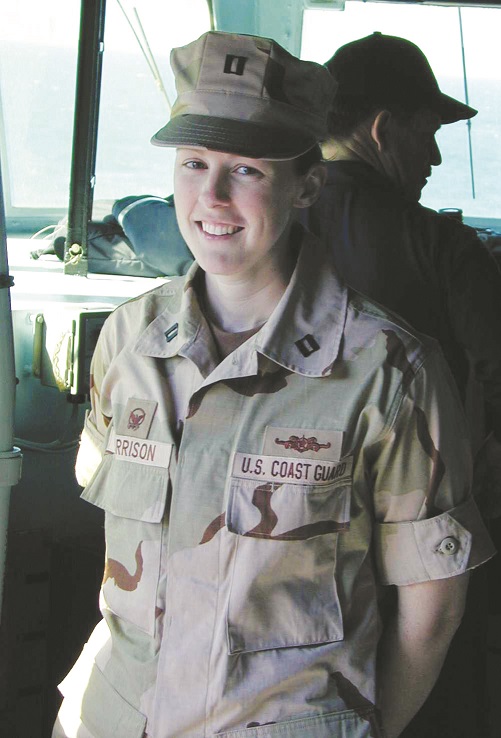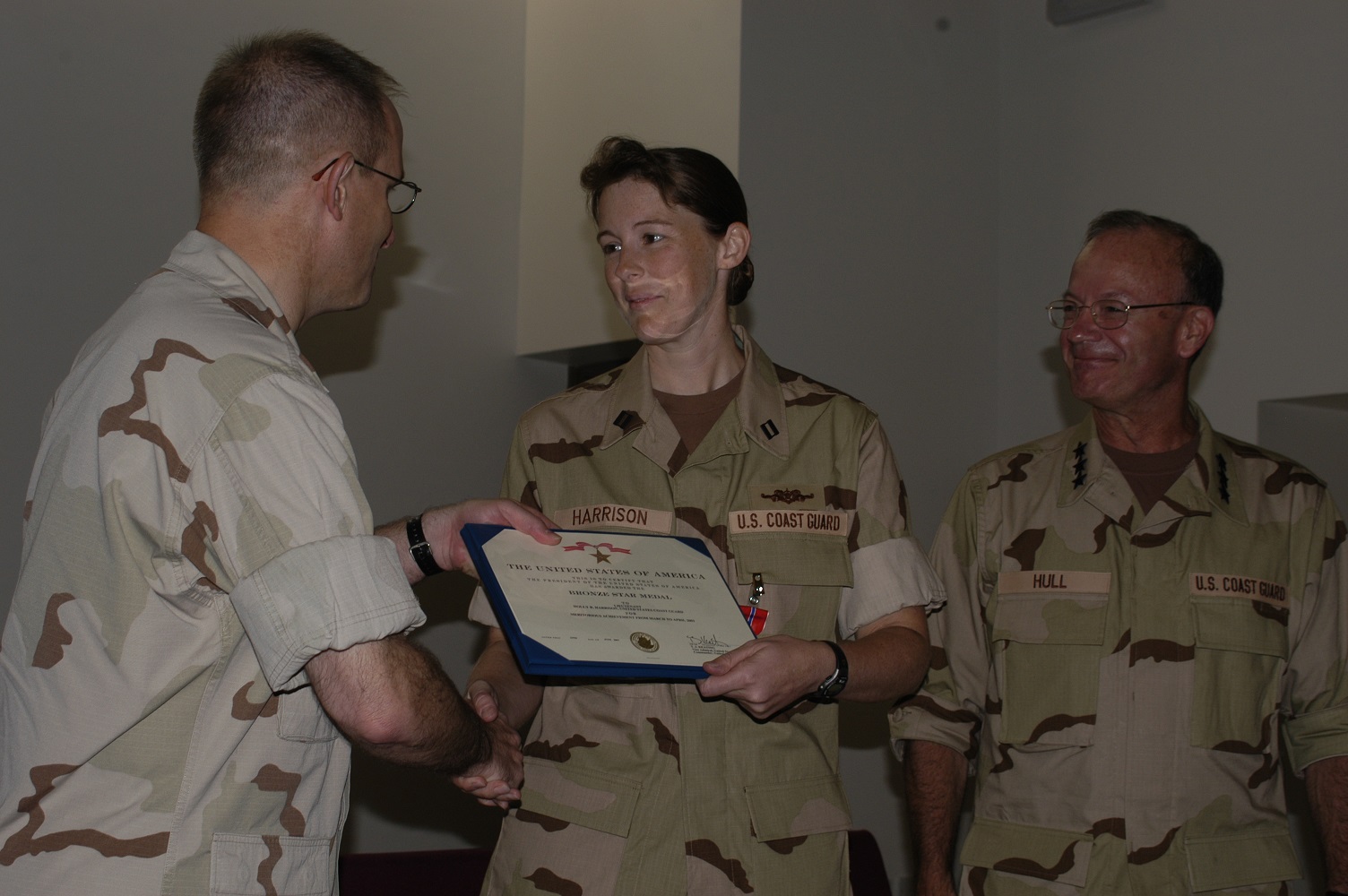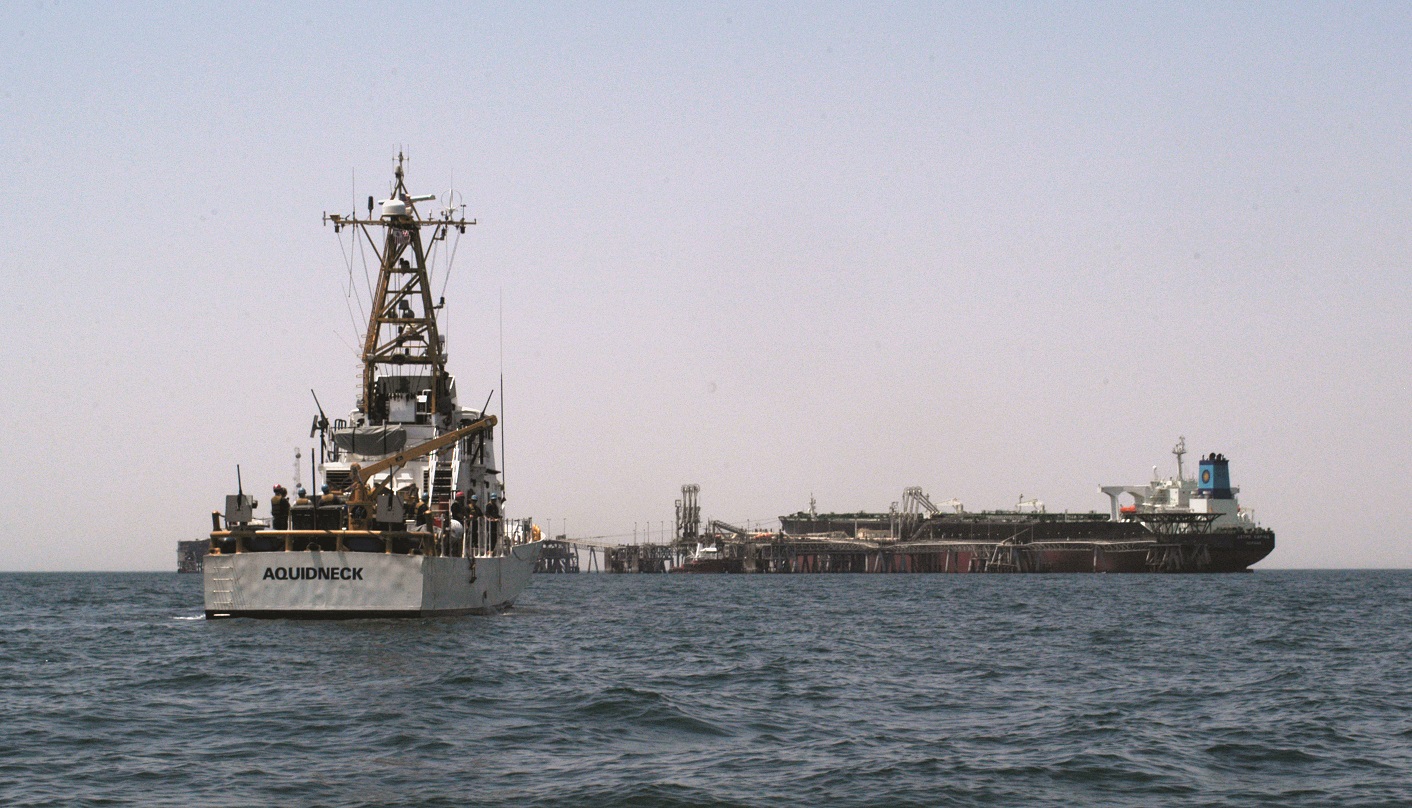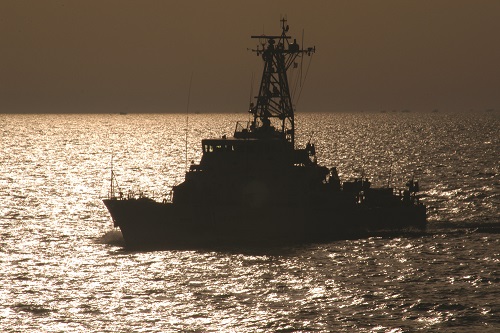 As with any meaningful career, that of Holly R. Harrison reflects her hard work and devotion to duty. Harrison comes from a military family tracing its connection to the nation’s armed services back several generations. Early in life, she continued her family’s tradition of service to country, gaining hands-on experience with Coast Guard units while still in high school. She spent a year in college working hard to fulfill her dream of entering into and graduating from the Coast Guard Academy.
As with any meaningful career, that of Holly R. Harrison reflects her hard work and devotion to duty. Harrison comes from a military family tracing its connection to the nation’s armed services back several generations. Early in life, she continued her family’s tradition of service to country, gaining hands-on experience with Coast Guard units while still in high school. She spent a year in college working hard to fulfill her dream of entering into and graduating from the Coast Guard Academy.
After completing four years at the Academy, Harrison received a variety of shipboard assignments, including ones on the Cutter Storis and 110-foot Cutters Kisk and Aquidneck. A World War II-era cutter famous for making the Northwest Passage in 1957, Storis proved an excellent vessel learn how to drive ships. Harrison served as an ensign aboard Storis in the stormy Bering Sea and boarded numerous fishing vessels in support of the cutter’s law enforcement mission. Next, Harrison transferred to Hilo, Hawaii, to serve as executive officer aboard the 110-foot patrol boat Kiska, which performed a variety of missions in the mid-Pacific area. Harrison served on board Kiska for two years before receiving command of her own cutter, the patrol boat Cutter Aquidneck, home-ported at Fort Macon, North Carolina.
Near the end of 2002, after well over a year in command of Aquidneck, Harrison received orders to the Northern Persian Gulf to take part in Operation Iraqi Freedom (OIF). Harrison had to cancel an assignment to escort vessels in the Delaware River, return Aquidneck to homeport to load spare parts, and steam for the Integrated Support Center-Portsmouth, in Hampton Roads, Virginia. In Portsmouth, Harrison spent over two months preparing the cutter and crew for deployment to the Middle East. These preparations included rigorous training in small arms and chemical, biological, and radiological warfare. Harrison and her crew also prepared Aquidneck for trans-Atlantic shipment on board a Military Sealift Command ship. Trans-shipment of Aquidneck and three other 110-foot cutters required a great deal of logistical work and by January 2003, the four patrol boats were ready to load on board the commercial heavy-lift motor vessel Industrial Challenger.
On Wednesday, Feb. 26, 2003, Harrison and her crew touched down in Bahrain. Not long after her arrival, Harrison and her three fellow patrol boat skippers boarded USS Valley Forge, a guided missile cruiser and command ship for Task Force 55, under which the cutters would operate. Task force commander, U.S. Navy Capt. John Peterson, had specifically requested use of the patrol boats during the September 2002 planning for OIF naval operations. Peterson and his staff briefed the skippers on their upcoming mission and the naval combat operations about to begin.
After the patrol boats arrived in Bahrain, the work tempo heightened. Within 10 days of Harrison’s arrival, the motor vessel Industrial Challenger delivered Aquidneck and the other 110’s after a 35-day passage. A week after Harrison and her crew touched down in Bahrain, a heavy-lift crane off-loaded the cutters and Harrison and her crew conducted sea trials for the next two days. On Saturday, March 8, the crew stowed stores on board Aquidneck and, the next day, the patrol boat sailed into the Norther Persian Gulf along with the Coast Guard Cutter Adak. Once the two cutters arrived, they began maritime interdiction operations, boarding and inspecting indigenous watercraft along the coast of Iraq.
Harrison and her crew touched down in Bahrain, a heavy-lift crane off-loaded the cutters and Harrison and her crew conducted sea trials for the next two days. On Saturday, March 8, the crew stowed stores on board Aquidneck and, the next day, the patrol boat sailed into the Norther Persian Gulf along with the Coast Guard Cutter Adak. Once the two cutters arrived, they began maritime interdiction operations, boarding and inspecting indigenous watercraft along the coast of Iraq.
In mid-March, Coalition naval forces restricted the flow of Iraqi watercraft along the Khawr Abd Allah (KAA) Waterway, the primary maritime link between Iraq and the Gulf. Naval planners believed that these Iraqi dhows and other watercraft might hold mines, weapons or escaping Iraqi officials. The dhows countered Coalition efforts by staging breakouts, which involved dozens of watercraft trying to escape simultaneously. These attempts included a large breakout of 60 dhows on March 17. Aquidneck worked together with the other patrol boats and an HH-65 helicopter from high-endurance Cutter Boutwell to corral the watercraft and board each of them. Together, they managed to inspect all the vessels and found no weapons, illegal cargoes, or Iraqi officials.
In the evening of Thursday, March 20, OIF combat operations began as Coalition warships launched Tomahawk missiles toward Baghdad. Aquidneck patrolled around the Naval vessels during launch operations to screen them from intruders. The missile launches proved an awesome sight and none of the off-watch crew could sleep. Harrison was unaware of the fact that, as captain of Aquidneck, she had become the first woman to command a Coast Guard vessel in a combat zone.
OIF combat operations began as Coalition warships launched Tomahawk missiles toward Baghdad. Aquidneck patrolled around the Naval vessels during launch operations to screen them from intruders. The missile launches proved an awesome sight and none of the off-watch crew could sleep. Harrison was unaware of the fact that, as captain of Aquidneck, she had become the first woman to command a Coast Guard vessel in a combat zone.
The next day, Aquidneck remained on patrol in the NAG. Early in the morning, Aquidneck’s lookout spotted a Royal Navy Sea King helicopter approach while another British Sea King vectored in from the opposite direction. To the amazement of the crew, the two helicopters collided in mid-air and exploded on impact. Aquidneck reacted immediately and appeared at the site of the disaster before any other Coalition vessel. As fuel burned on the water’s surface surrounding the wreckage, Aquidneck launched its small boat and commenced search operations; but all the seven helicopter crewmembers, including an American Navy officer, died in the crash.
After Coalition naval forces wrapped up the initial phases of combat operations, naval planners focused on opening the KAA Waterway to vessel traffic. On Saturday, March 22, Aquidneck joined an escort detailed to protect Coalition minesweeping vessels clearing the channel to the Iraqi port of Umm Qasr. To do this, Aquidneck and the other escorts had to navigate upstream of the minesweepers. This mission proved to be a stressful one because Harrison’s crew knew they were sailing through unswept waters and that their thin-skinned cutter would be torn apart by a floating mine. This mission concluded successfully with no casualties to the minesweepers or their escorts, but later analysis indicated that Aquidneck had passed through waters holding active mines.
Aquidneck performed numerous patrol missions to safeguard Iraqi oil platforms. On several of these patrols, Iranian gunboats would appear, test Harrison and her crew’s reactions, and gauge the capabilities of Aquidneck. Harrison drew a fine line between responding assertively and avoiding hostilities. She chose the middle ground of having the crew ready to man the cutter’s loaded guns without aiming weapons at the Iranians. Whenever Iranian vessels appeared in Aquidneck’s patrol area, Harrison paralleled their course and matched their speed, sometimes exceeding 35 miles per hour to do so. Harrison made su re her cutter did not present a threatening posture, but she never backed down and the Iranians routinely broke off the encounters and retreated to their territorial waters.
re her cutter did not present a threatening posture, but she never backed down and the Iranians routinely broke off the encounters and retreated to their territorial waters.
Securing the KAA Waterway for regular commercial traffic required not just minesweeping operations but clearing other navigational hazards. Wrecks and hulks of destroyed ships dating back as far as the Iran-Iraq War dotted the KAA Waterway’s shoreline. Armed boarding teams from the patrol boats had to clear the shoreline of any potential threats hidden within these wrecks. During these operations, a boarding team from Aquidneck discovered military supplies within the hulk of a tanker, including Iraqi military uniforms, money, AK-47s, fresh food and drawings of Coalition naval vessels. Aquidneck’s shore parties also secured several coastal bunkers that proved inaccessible to land forces.
Under Harrison’s command, Aquidneck and her dedicated crew conducted innumerable maritime interdiction, search and rescue, escort, and combat-related operations in the Northern Persian Gulf. In 2003, Harrison received recognition for these achievements, becoming the first woman in service history to receive the Bronze Star Medal in addition to her record as the first woman to command a Coast Guard cutter in combat.
After [demobilizing] to the United States, Holly Harrison transferred to the Maritime Law Enforcement School, in Yorktown, Virginia, and put her extensive boarding experience to use as a senior instructor. She moved with the school to Charleston, South Carolina, and helped establish the Coast Guard’s Maritime Law Enforcement Academy in that city. Following her assignment in Charleston, she served as executive officer of medium-endurance Cutter Legare and, later, as commanding officer of National Security Cutter Kimball. Today, Capt. Harrison serves as Coast Guard District Eleven’s Chief of Response and remains one of the service’s long blue line.
EDITOR'S NOTE: After nearly 32 years of service in the Persian Gulf, Cutter Aquidneck was decommissioned in Manama, Bahrian, June 15, 2021. All of the 110-foot patrol boats supporting Patrol Forces Southwest Asia have since been decommissioned and replaced with the new Fast Response Cutters.
In the News: